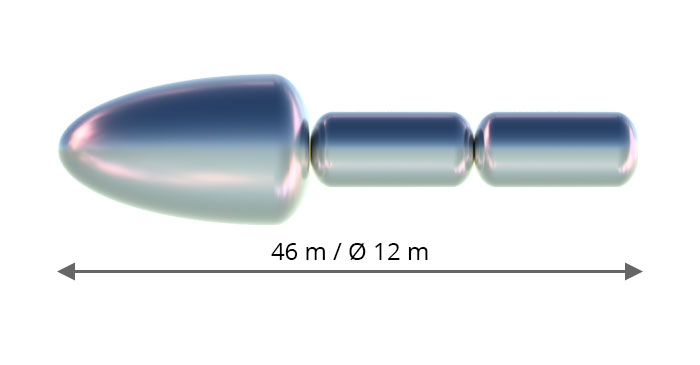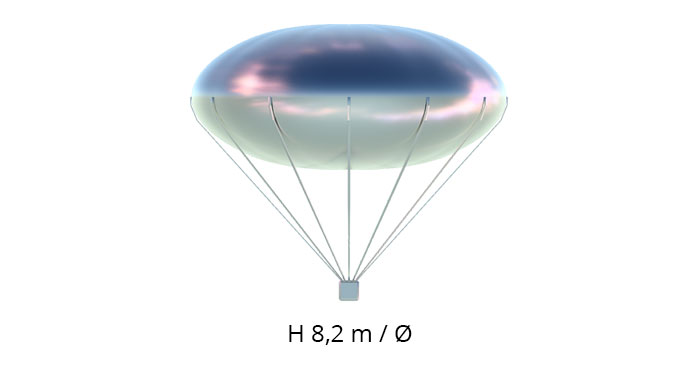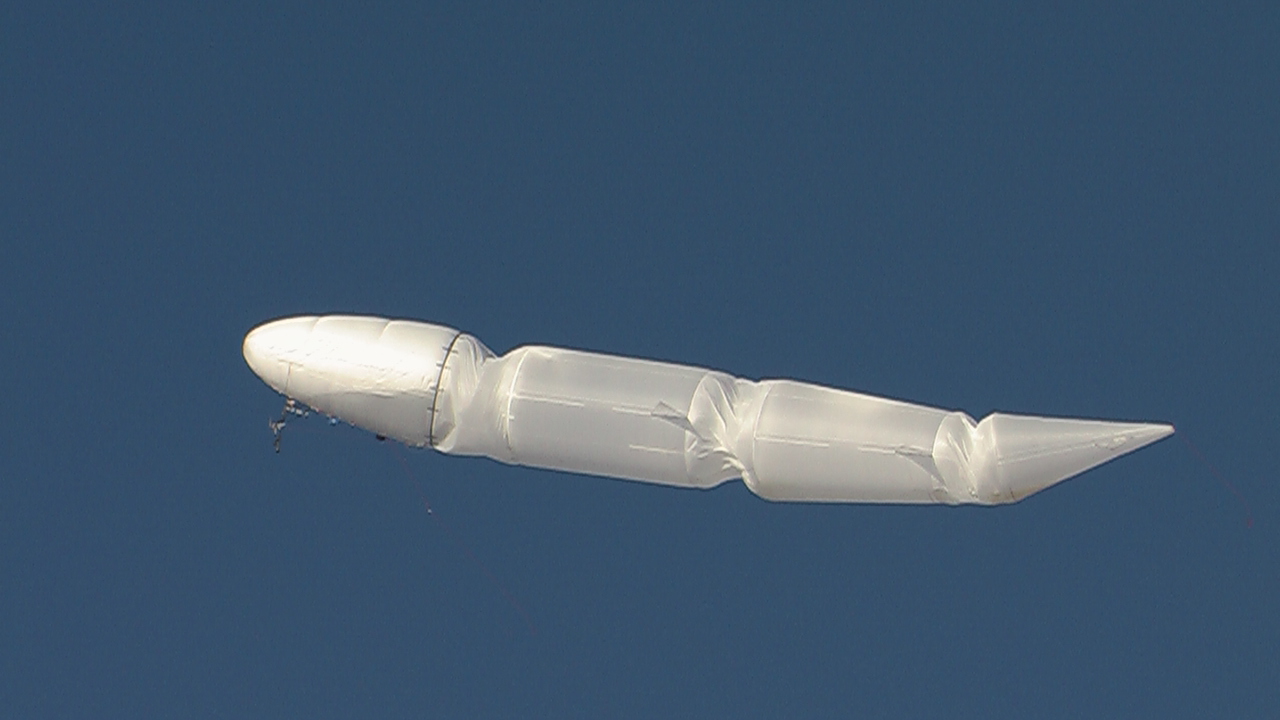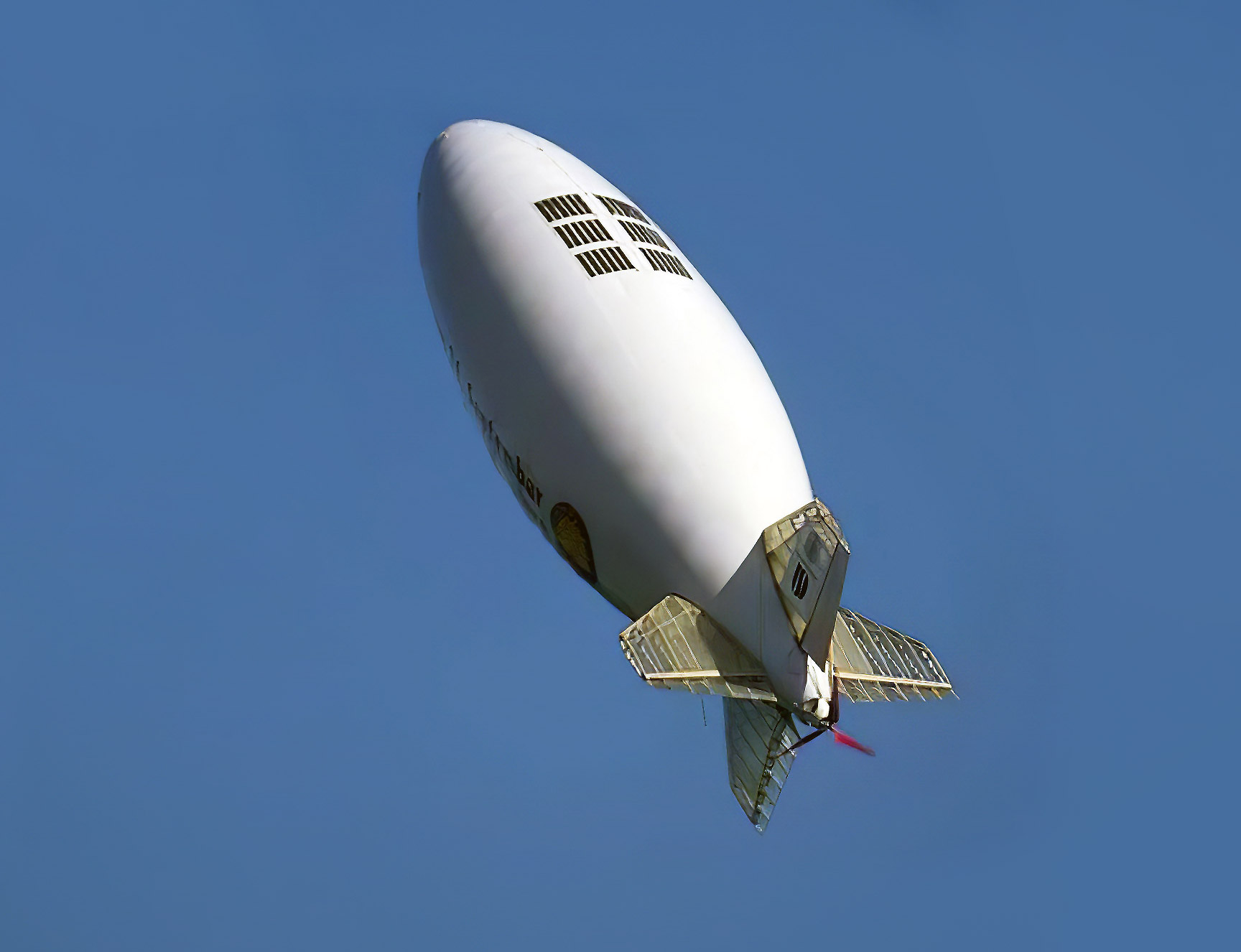Product family
The TAO SkyDragon is technologically speaking a so-called altitude platform for telecommunications and data transmission with a radius of up to 300 km, also known as High Altitude Pseudo Satellite (HAPS). It does not fly as high as the known communication satellites, but in the stratosphere at an altitude of up to 20 km. It is powered by solar energy from ultra-light thin-film solar cells or by batteries on board. One version of the spacecraft is buoyed by helium gas.
It flies autonomously within a predetermined radius, is launched and landed by a ground station and the on-board telemetry. It can take off from a simple ground infrastructure (without an airport or tarmac), is inexpensive, recyclable and reusable.
With a data transmission security of 99.9%, it can restore telecommunications for the population and rescue services anywhere in the world within 24 hours in the event of a disaster.
- Telecommunications and data transmission e.g. in conurbations or remote regions or as an additional concept for large cities, coverage of the so-called "last mile", protection and support of existing infrastructure
- Cost-effective, additive and self-sufficient telephone network
- Development of an independent, new GPS system from the stratosphere
- Transmission of information - e.g. TV, radio, navigation services or live sports broadcasts/events
- Educational television for economically underdeveloped regions
- Independent, own intranet for globally operating large companies
- IOT - Internet of Things
- Drinking water management, agricultural support (optimisation of crop rotation), forest protection and planning
Satellite launch without
expensive infrastructure
from ground level to 18.000 meters

- Launch of micro or nano satellites from the stratosphere
- The system is reusable, recyclable, steerable, ready for take-off and landing
- Can be launched from anywhere without a fixed infrastructure (DragonHead platform)The system is reusable, recyclable, steerable, launchable and landable
10 up to 800 m

The innovative, newly to be developed balloon system (SmartBalloon System) is to be developed together with the DITF in Denkendorf:
The TAO DragonCom system will provide data transmission for telecommunication, monitoring and data transfer for visibility ranges of up to approx. 20 km (at 50 m/164 feet altitude) – mobile or stationary. This TAO
DragonCom system is capable of extending the existing range for data for data transfer and communications or, in rural areas, to extend areas to provide last-mile communications.
The system consists of a flying but tethered aerostat balloon in a special, innovative design (filled with helium), which can be launched to the appropriate altitude with a winch. This tethered balloon system is capable of carrying a a variety of payloads such as (thermal imaging) cameras, 5G, LTE and other telecommunication devices, etc. – depending on customer requirements.
- local data service without ground infrastructure or additional to existing infrastructure
- optional data links to other TAO-SkyDragon Coms, satellites, HAPs or ground stations
- flexible, very cost effective, easily inflatable for regional HotSpots
- easy to maintain, recyclable for forest monitoring
- quick setup in up to 15-30 minutes for emergency response (earthquake, if the antenna masts and ground infrastructure have collapsed).
- low-noise continuous operation for e.g. port monitoring
- wide range of payloads for various applications (WLAN hotspot, telecommunication, radar, laser, thermal imaging cameras...)
This solar airship is unmanned and has a solar energy supply that provides enough capacity for the mission. Deployments of the solar airship in recent years have led to a continuous improvement of the technologies. Since then this type of airship has been used for many research activities and also as a flying platform in other areas of science and security. Since 1996 this solar airship has been built. This airship type has already had numerous flight missions in Germany, Switzerland and Australia for the purpose of smog measurement and traffic and route monitoring. This type of solar airship is the only aircraft which – without producing its own emissions – is able to follow a precisely defined mission at a certain altitude for a longer period of time.
- Aerial photography
- Geomonitoring
- Vessel traffic and port surveillance
- Network inspection of train movements
- Pipeline control
- Border surveillance
TAO has built two different special airships of the Mid Altitude Airship type. Both are unmanned, autonomously controlled “Lighter than Air” (LTA) airships.
The 34 meter long airship is a non-rigid, multi-segmented, rapidly deployable, rapidly deployable unmanned aerial vehicle (UAV) that fulfills a number of desired mission profiles at altitudes up to 5000 meters. Depending on weather conditions, it can be deployed continuously for several days, with the current version capable of carrying approximately 25 kg payload on board. This payload can, for example, guarantee an operational line of sight (LOS) of initially about 200 kilometers.
This airship utilizes many technological advances that are also used in the TAO Altitude Platform (HAP), including the TAO Fuel Gas Enhanced Endurance System, the Automated Flight Control System and the Segmented Module Design.
The airship design offers the advantage of rapid deployment from storage to launch. Typically, airships require a large hangar or exposed mooring platform, which increases cost and complexity and limits mobility.
- Various monitoring and surveillance tasks
- Asset monitoring
- wide range of payloads for various applications for telecommunications and data transfer (WLAN hotspot, telecommunications, radar, thermal imaging cameras...)
bis ??? Meter

Text follows
- Text follows






